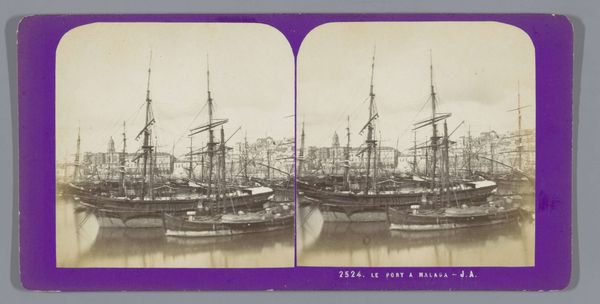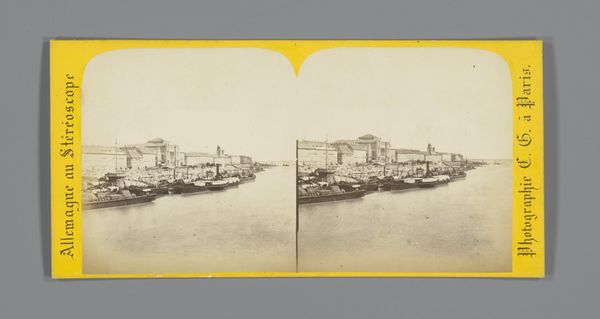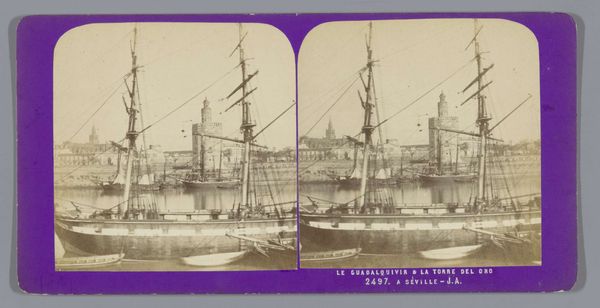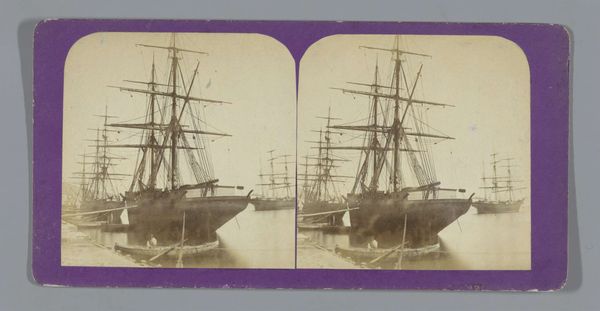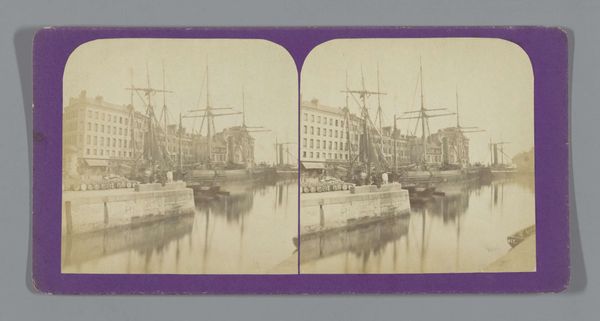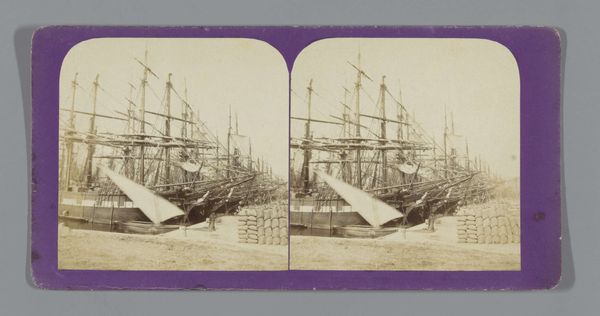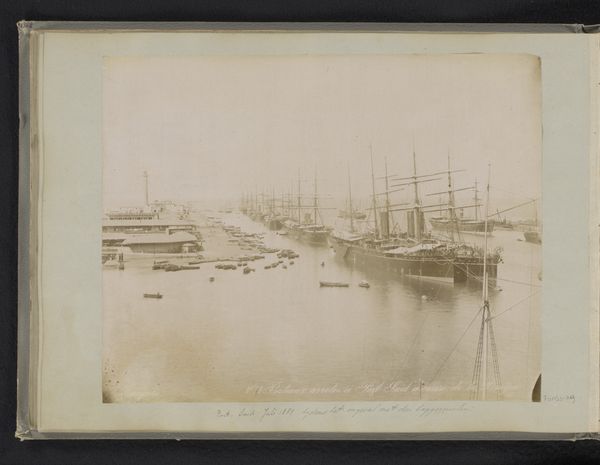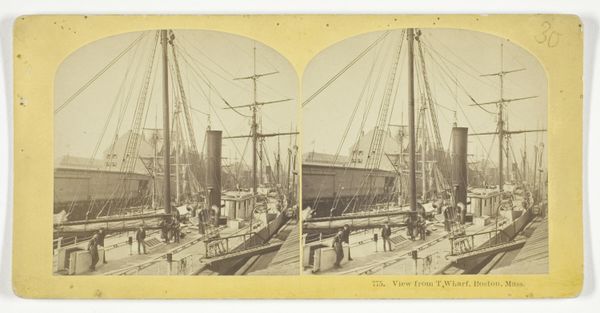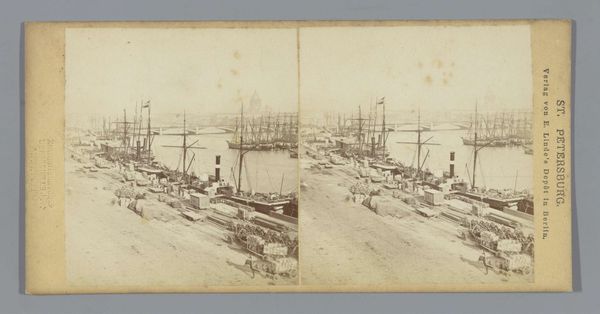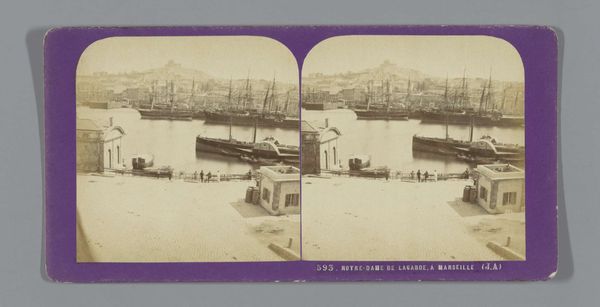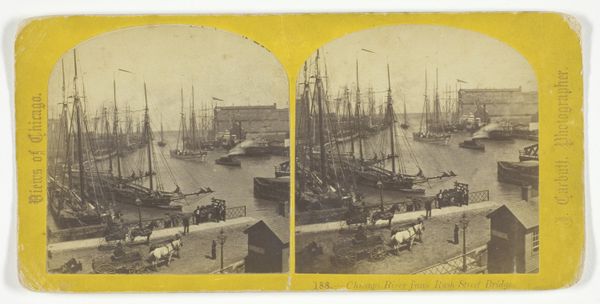
print, photography
# print
#
impressionism
#
landscape
#
photography
#
coloured pencil
#
cityscape
Dimensions: height 85 mm, width 170 mm
Copyright: Rijks Museum: Open Domain
Curator: Jean Andrieu gives us this stark dual photograph titled "Schepen in de haven van Le Havre," placing us right in the harbor from 1862-1876. It really captures the industrious spirit of the city at that time. Editor: It's almost monochromatic. The reflections on the water provide some visual interest, but I find it quite muted and subdued. There is little to differentiate between foreground and background planes, or give any three-dimensionality. Curator: True, the tonality certainly sets a mood, and yet it speaks volumes about the labor and logistical structures behind Le Havre. These aren't picturesque fishing boats; they are working vessels tied to the industrial engine. You can almost hear the clang of metal and the shouts of dockworkers. The rigid geometry of the architectural surrounds speaks of urban order and controlled industry. Editor: And the composition contributes to that sense of order; look at how the masts of the ships reach upwards, creating a series of vertical lines that are echoed in the pilings supporting the quay. It's a very structured, almost mathematical, way of organizing space. Curator: Absolutely. The photographer is acutely aware of perspective. The fact this is a dual print made for stereoscopes reinforces this: depth, space and production all collide within this photographic image and its reproductive capacities. We get this sense of a city built around trade, connected to global systems. Photography itself here becoming a material agent within that. Editor: It's fascinating to see how Andrieu uses light and shadow to articulate form in such limited colours; even the reflections contribute to this structured image. Although simple in tone, there's this sense of latent dynamism embedded in that composition. The architecture, the rigging – all working in unison as structured objects. Curator: So, ultimately, we are considering the photograph itself as a produced object, a small, easily transported piece reflecting immense transformations occurring in global economies, capturing a sense of its place in larger material networks. Editor: Yes, and how the stark and somewhat austere composition of the harbour is its strength, even its most visually captivating feature. Thank you, Jean Andrieu, for giving us an image to consider space, place and trade!
Comments
No comments
Be the first to comment and join the conversation on the ultimate creative platform.
